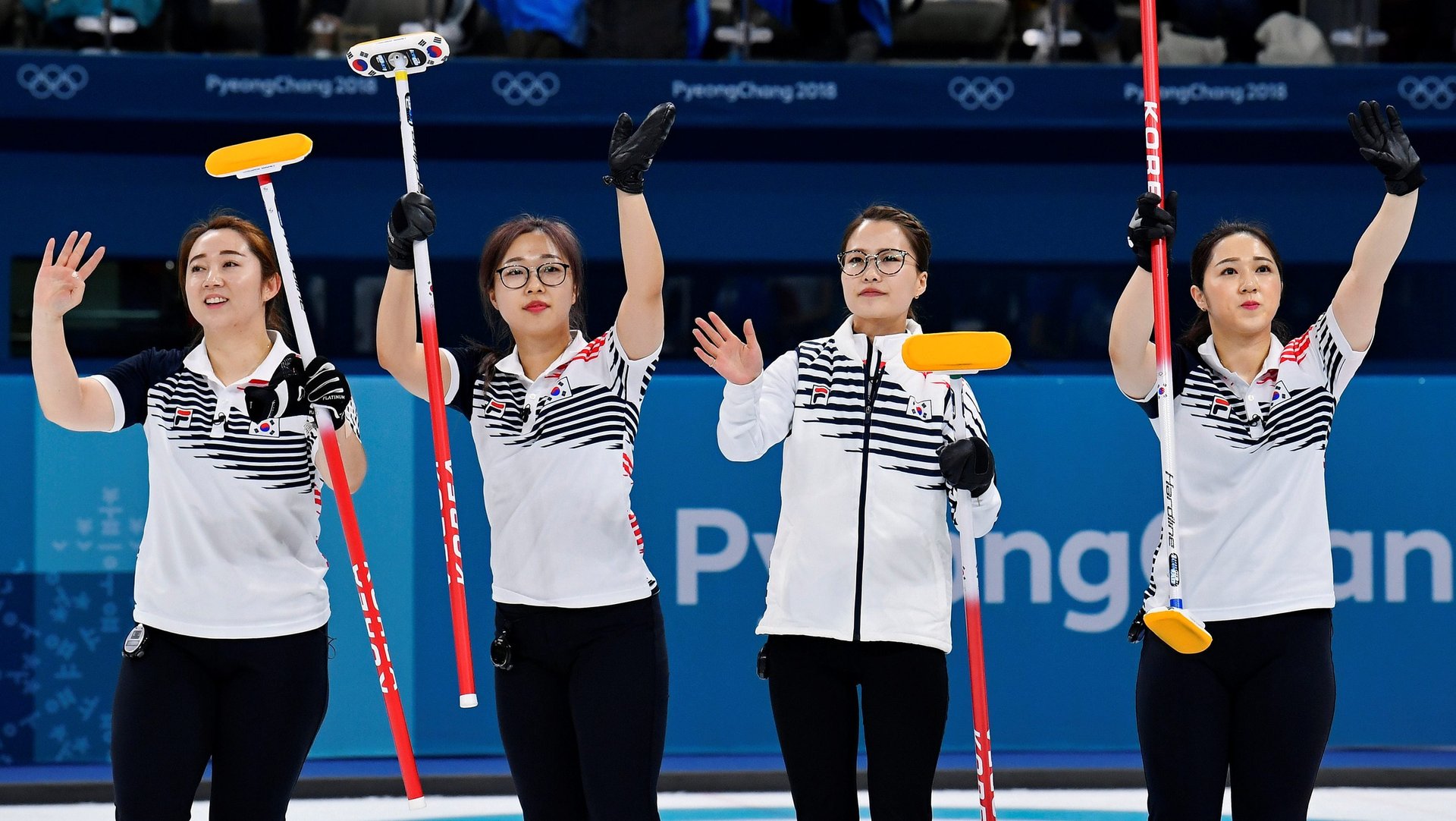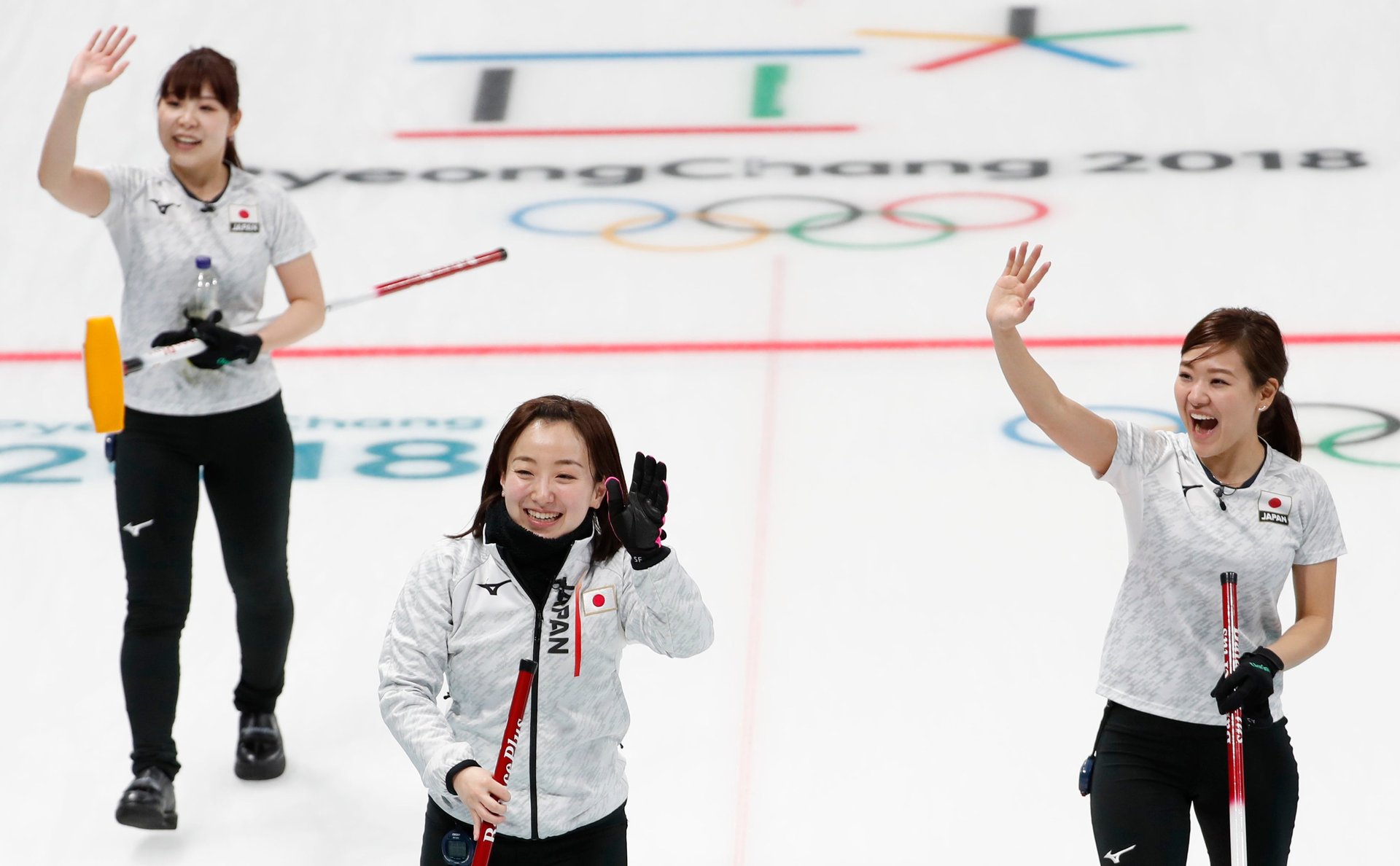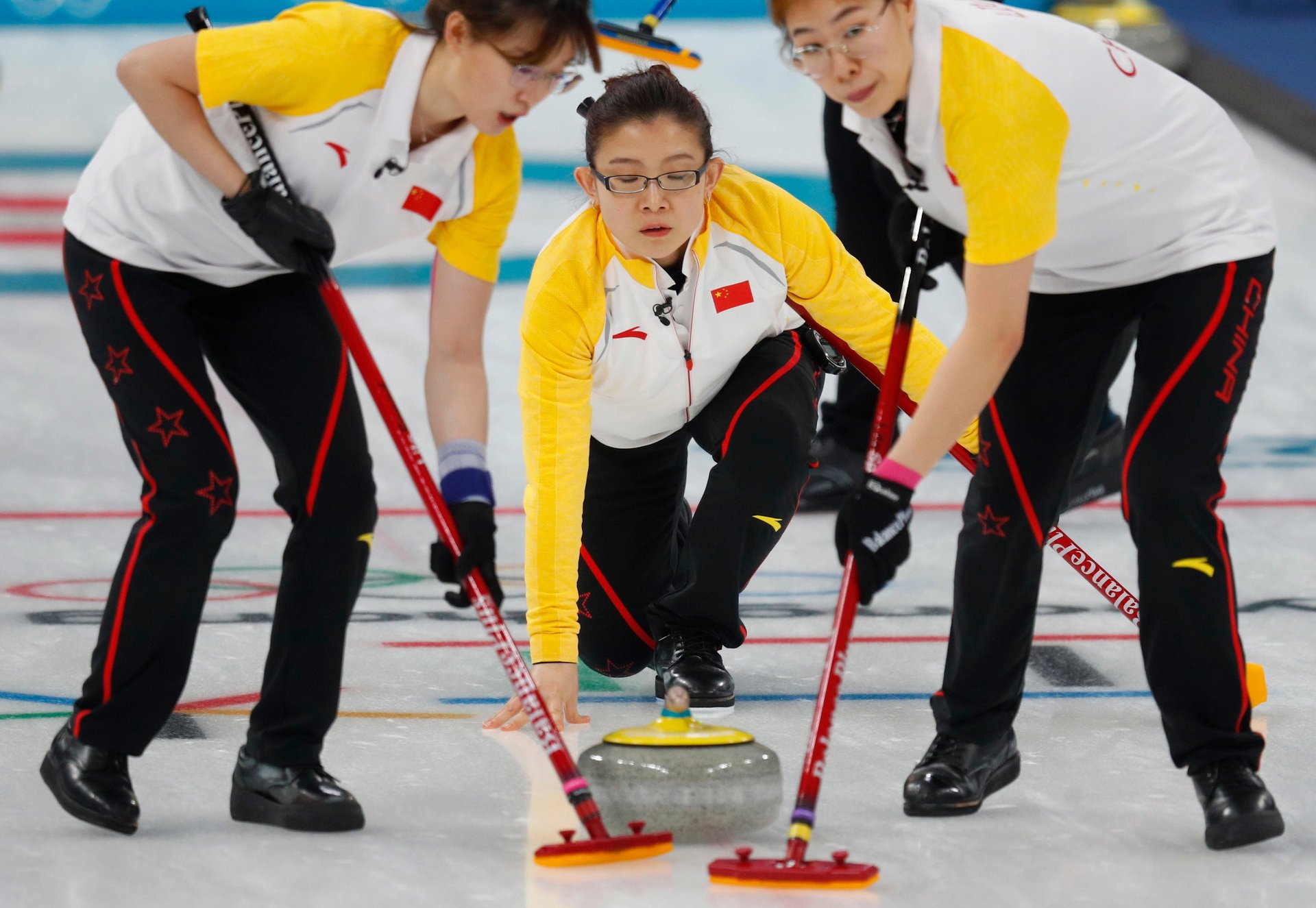Olympic women’s curling shows the future of the 16th-century Scottish sport is in Asia
Curling originated in the 16th century as a game played by burly Scottish men across frozen lakes, and has for long been dominated by powerhouses like Canada and Sweden. These days, Asian women are increasingly likely to medal in the sport, which involves using brooms and frantic sweeping to steer very heavy stones across a sheet of ice.


Curling originated in the 16th century as a game played by burly Scottish men across frozen lakes, and has for long been dominated by powerhouses like Canada and Sweden. These days, Asian women are increasingly likely to medal in the sport, which involves using brooms and frantic sweeping to steer very heavy stones across a sheet of ice.
At the Pyeongchang Winter Olympics, South Korea’s women’s team became the first to qualify for the semifinals, after a dream run that saw them lose only a single game. On Wednesday (Feb. 21), Japan too made it into the semis, and then won the bronze medal with a win over the British team Saturday. On Sunday, South Korea won silver.
These Olympics aren’t the first time an Asian women’s team has medaled in curling at the Olympics, however—Chinese women won a bronze in 2010 in Vancouver. But they do mark the first time ever veteran curling champion Canada didn’t win a women’s medal in the Olympics. The rise of women’s curling teams from Asia comes as countries in the region looked to newer Olympic sports as possible sources of medals.
“Once curling got us [Canada] in the Olympics, a lot of countries recognized this as an opportunity to get a medal,” a curling commentator told the New Statesman. “So what they’ve done in some of those cases in China, Japan, Korea, is they’ve found athletes from other sports and converted them into curlers.”
South Korea: the rise of the “Garlic Girls”
On Sunday, South Korea battled longtime curling champion Sweden in the gold medal game, but ended up with silver. Now consider that the country sent a women’s curling team to the Olympics for the first time only in 2014.
The country owes its present curling success to the central garlic-growing town of Uiseong, which is why the local press has dubbed the five female athletes—all of whom share the last name Kim—the “Garlic Girls.” The town’s mayor directed government funds toward the sport, NPR reported, prompting some schools to adopt it.
“We canceled our basketball team that was here in the school and changed our school sport to curling,” Lee In-young, former principal of the Uiseong Girls High School where four of the curlers studied, told NPR.
The Gyeongbuk Curling Association, one of the country’s earliest, was founded in 1995 to promote the sport. The organization later founded curling associations in over 10 provinces and cities. In 2006, one of South Korea’s first curling facilities was built in Uiseong.
To distinguish among the Kims, the curlers adopted nicknames—some based on their favorite breakfast foods—during a visit to Canada a few years ago: Pancake, Sunny, Steak, Yogurt, and Chocho.
The curlers have faced an uphill climb in Korea because the sport was unfamiliar to most Koreans, making it hard for the team to secure financial support and training facilities. The sport faced a further setback in 2017 when a government audit was launched to look into allegations including misuse of funds by South Korea’s curling federation. But the team’s outstanding performance in this Olympics has changed everything for the women, whose fans express their adulation through memes on the internet, particularly of the team’s 27-year-old skip, Kim Eun-jung.
Japan: 80 years in the making
Japan’s curling teams automatically qualified in the 1998 Nagano Winter Olympics, the first year curling became part of the official program, because it was the host country. Since then, the women’s curling team has made it into every Olympics—the only Asian women’s team to do so until Sochi. But the sport only became popular outside the Olympics about a decade ago as the country built new arenas for curling, noted Sawako Muramatsu, a producer for curling coverage at Japanese broadcaster NHK.
This year, it beat Sweden and Denmark, but lost to Switzerland in the qualifiers. Thanks to a US loss to Sweden, however, Japan joined South Korea, Sweden, and Great Britain in the semi-finals. After losing to South Korea on Friday, it went up, successfully, against Great Britain for the bronze—its first Olympic curling medal.
Curling in Japan dates back to 1936 at the Olympics in Germany, where it was a demonstration event, according to (link in Japanese) the Japan Curling Association. Japanese athletes who took part there took a stone back to Japan and started playing on Lake Suwa in Nagano. A curling club and then a tournament was founded.
After a long hiatus, curling was revived in the 1970s because of an exchange with Alberta in Canada, with the first curling association established in Hokkaido in the 1980s. Now 24 prefectures in Japan have curling associations, according to the Japan Curling Association. The Nagano curling club estimates (link in Japanese) about 3,000 people play in Japan—somewhat behind Canada’s one million registered players.
Satsuki Fujisawa (link in Japanese) is the skip of the Japan women’s team and the face of the sport this Olympics in Japan. She was born in Hokkaido and reportedly started curling at the age of 5. Her father also curled. After graduating from high school, she went to work for a power company in Nagano, where she played on the company curling team.

China: Legends return
One date looms large for Chinese curling—2022, when the country will host the Winter Olympics.
China only formed its national team in 2003 (link in Chinese). It has since increasingly participated in international games, including winning a gold medal in the 2009 Women’s Curling Championship, which marked a first for an Asian country.
Chinese audience got to know the sports thanks to (link in Chinese) four female curlers, led by star athlete Wang Bingyu. Wang, Zhou Yan, Liu Yin, and Yue Qingshuang won an Olympic bronze in the 2010 Vancouver games. At that time, a saying became popular on the Chinese web— “One should cultivate a daughter to be like Wang Bingyu,” noted the news portal Chinanews.
When China appeared to be having a hard time with its curling preparations for the Pyeongchang Olympics, 33-year-old Wang and 35-year-old Zhou, who had retired after the 2014 Sochi Olympics, decided to rejoin (link in Chinese) the national team in 2016.
This time around, however, China’s women’s team didn’t make it to the medal games, even though they handed Japan a defeat in the qualifying rounds. In its report on the match against the US team, state-run news agency Xinhua said the team suffered for taking too long to adapt to the way the stone had been polished that day.

While the game is not widely played (link in Chinese) recreationally, there’s apparently huge interest in watching it on television. For the Vancouver Olympics, China and Japan topped the viewership of curling, according to Darrell Ell, competition and development officer of the World Curling Federation.
As more tournaments take place in China, increasing numbers of amateur players may be drawn to the game. In January, the Chinese Curling Association signed an agreement to relaunch an earlier competition, now renamed the Curling World Cup, which will be broadcast worldwide. Made up of four tournaments in different nations, it will kick off in China in September or October this year.
China is also building 500 ice rinks to promote winter sports as Beijing prepares for the next Winter Olympics. China isn’t as strong at the Winter Olympics as as the summer ones, but curling could give it a chance to up its medal count on home turf. The Scotland-based World Curling Federation, for its part, is looking closely at China as a place where it can add millions of players, and China agrees. “We are quite sure that curling will be one of China’s favorite winter sports,” Ren Hongguo, vice president of the Chinese Curling Association, told the WCF in 2016.
Update, Feb. 25: This story was updated to reflect Japan’s bronze medal win, and South Korea’s silver medal.